Series of damaging earthquakes hit capital Zagreb, Croatia – the strongest since 1880
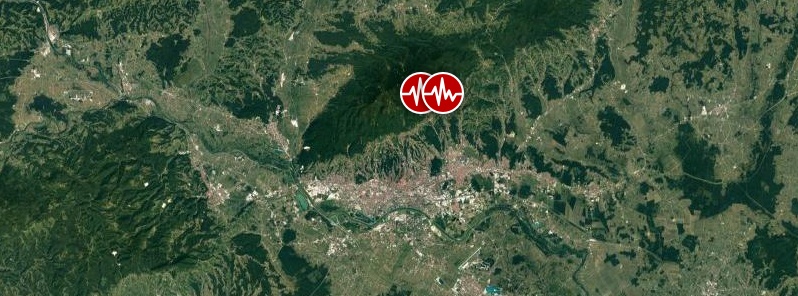
Several moderately strong and shallow earthquakes shook Croatian capital Zagreb early Sunday morning (LT), March 22, 2020. EMSC registered the strongest ones as M5.3 at 05:39 UTC and M5.0 at 06:17 UTC. Both quakes were registered at a depth of 10 km (6.2 miles). The USGS registered the strongest one as M5.4 at a depth of 10 km (6.2 miles).
Croatian Geophysical Institute is reporting the strongest one as M5.5, making it the largest earthquake to hit Zagreb since 1880 (M6.3).
Widespread damage was reported across the capital and nearby cities.
At least 27 people were injured, of which 18 severely. 1 person has been killed.
At least 30 aftershocks were registered before the end of the day (LT).
The epicenters were located about 6 km (3.7 miles) SE of Kašina (population 1 500) and 7 km (4.3 miles) NE of capital Zagreb (population 699 000), Croatia.
According to the USGS, there are about 3 250 000 people living within 100 km (62 miles).
56 000 people are estimated to have felt very strong shaking, 864 000 strong, 402 000 moderate and 2 065 000 light.
The USGS issued a yellow alert for shaking-related fatalities and economic losses. Some casualties and damage are possible and the impact should be relatively localized. Past yellow alerts have required a local or regional level response.
Estimated economic losses are less than 1% of GDP of Croatia.
Overall, the population in this region resides in structures that are a mix of vulnerable and earthquake-resistant construction. The predominant vulnerable building types are rubble/field stone with mud and unreinforced brick with mud and timber post construction.
Recent earthquakes in this area have caused secondary hazards such as landslides that might have contributed to losses.
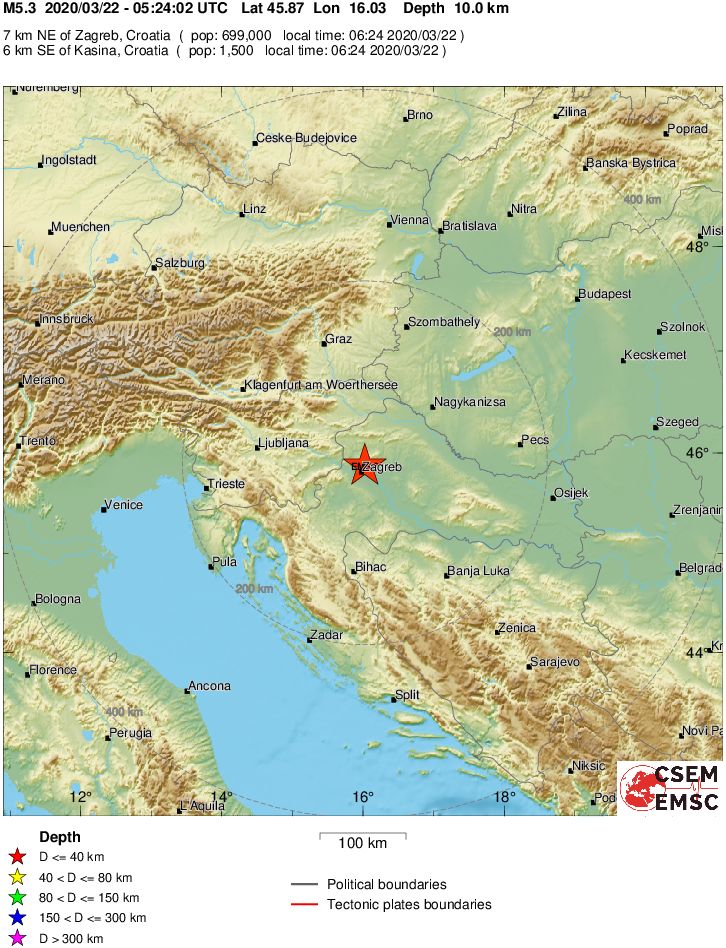
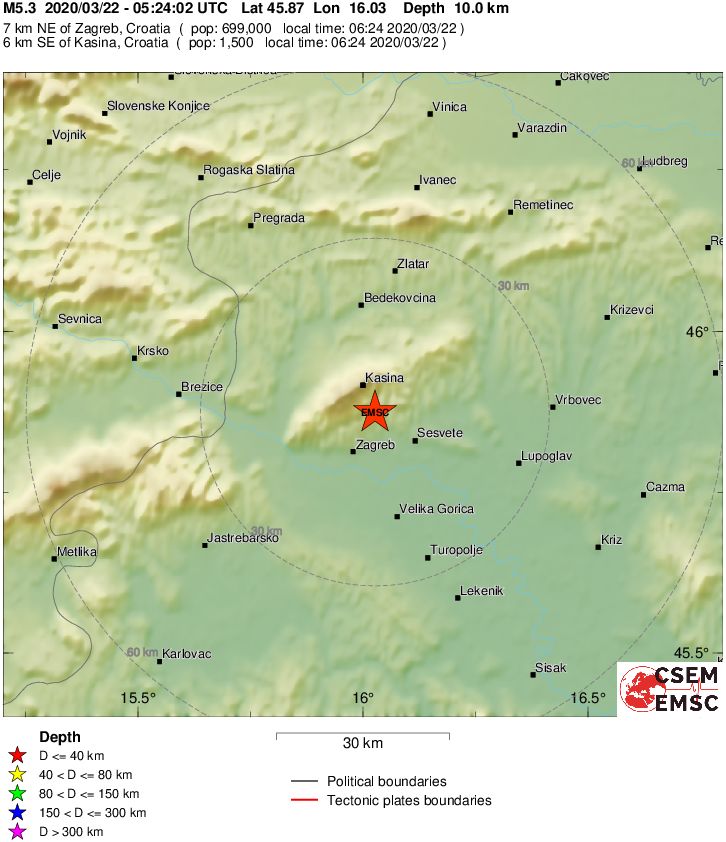
The quake lasted more than 10 seconds, resulting in widespread damage across the capital and nearby cities and causing many people to rush into the streets.
Zagreb's iconic cathedral, rebuilt after it toppled during the 1880 M6.3 earthquake, was also damaged, with the top of its two spires collapsing.
Authorities are urging everyone to keep social distance from each other as the country struggles to contain COVID-19. In addition, the country is dealing with a cold outbreak, forcing authorities to warn everyone to keep warm and stay out of damaged buildings.
Authorities from the nearby Nuclear Power Plant Krško said the plant was not damaged.
Internet services are down in some areas.
Power outages have also been reported.
People living close to the epicenter are reporting frequent tremors.
37 aftershocks were registered by 03:00 UTC, March 23.
Early March 23 estimates suggest more than 250 damaged buildings. However, damage surveys are still in progress.
In total, 27 people were injured, of which 18 severely. 12 of them were hospitalized, including a 15-year-old girl who was hit by falling debris. Unfortunately, she died in the hospital on March 23.
Estimated population exposure to earthquake shaking
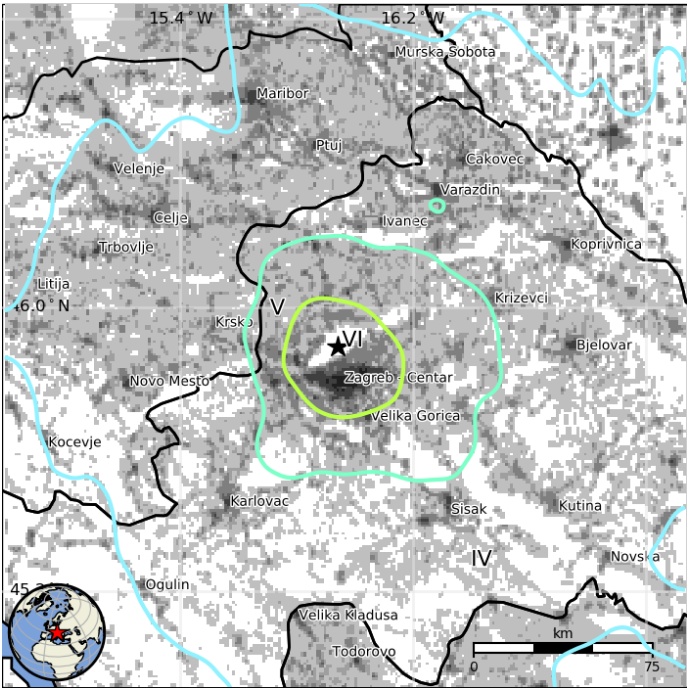
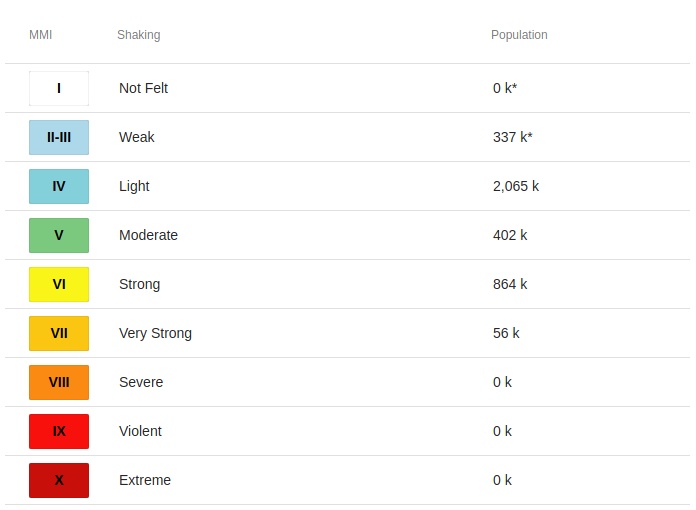
Selected cities exposed
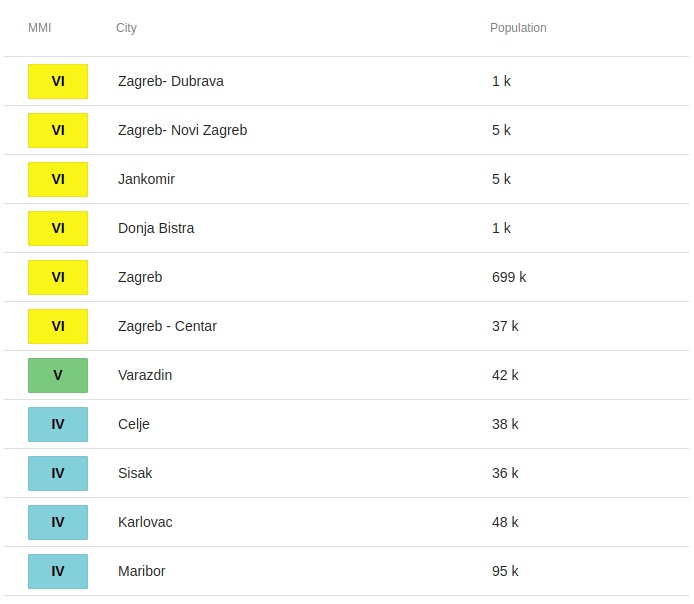
Regional seismicity
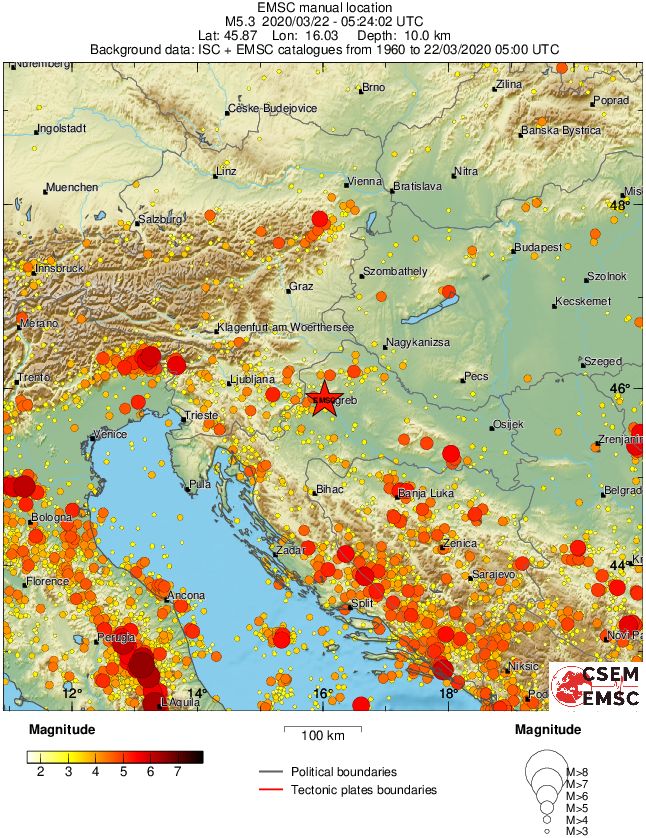
Multimedia
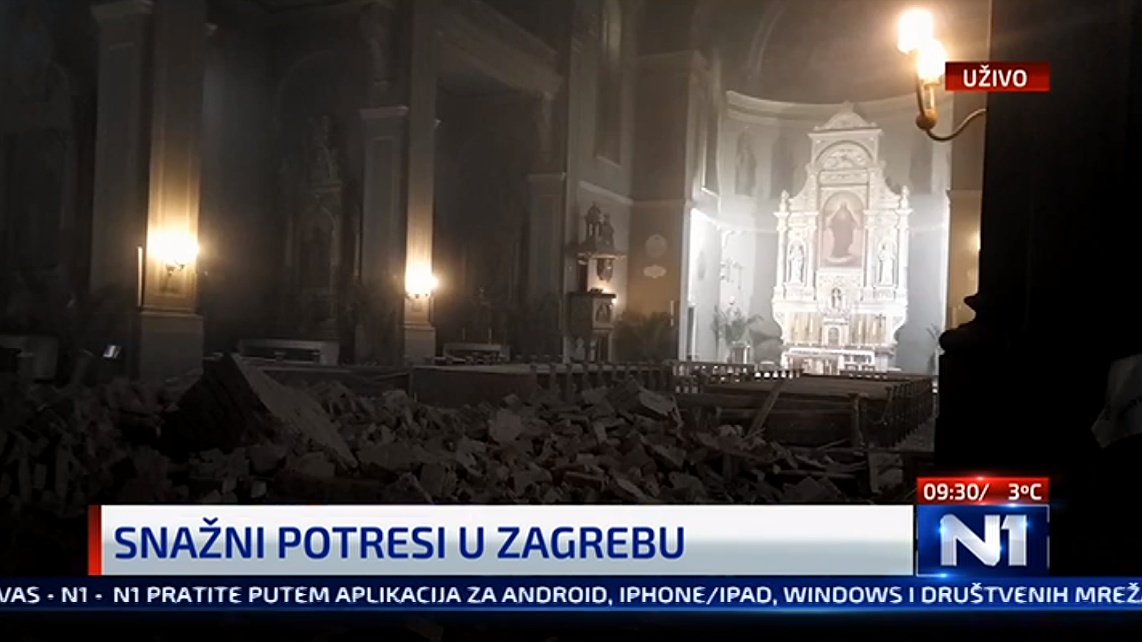
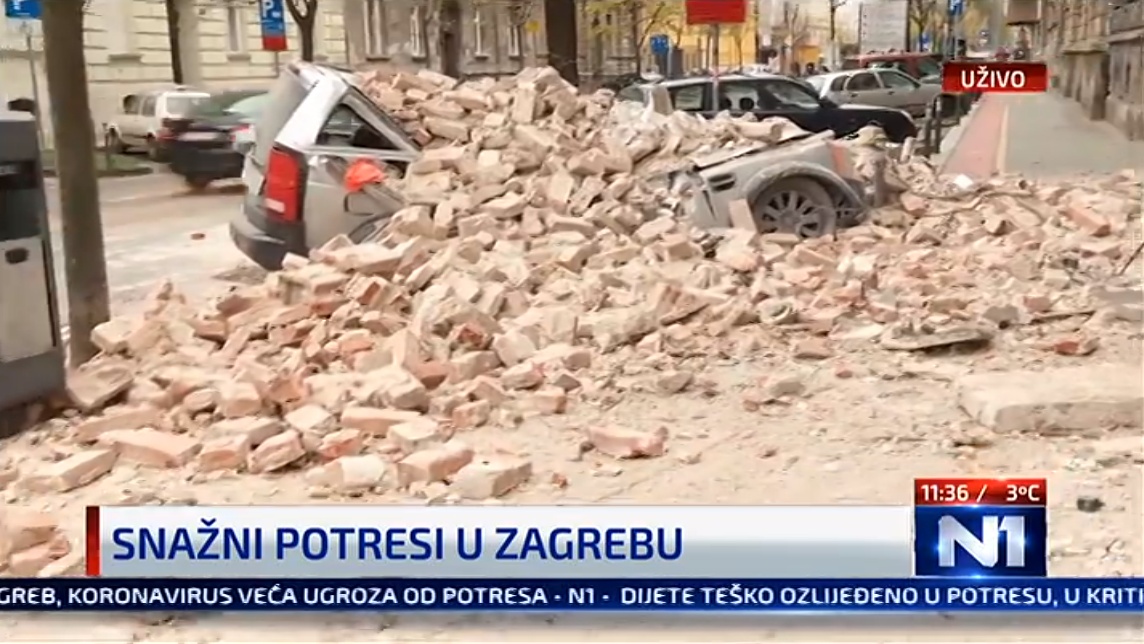
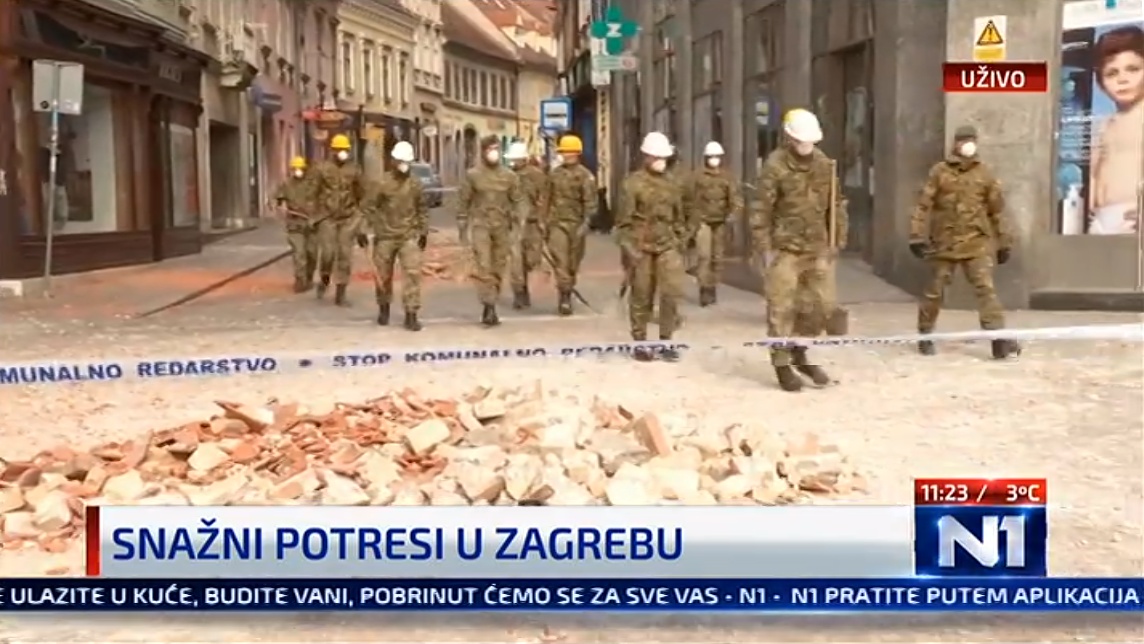
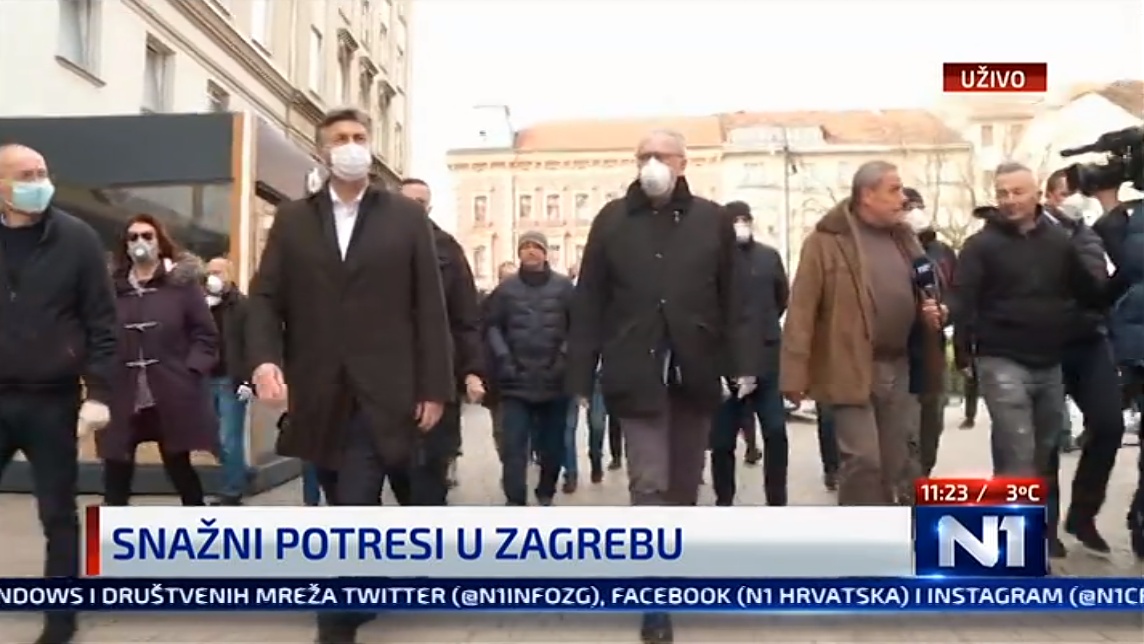
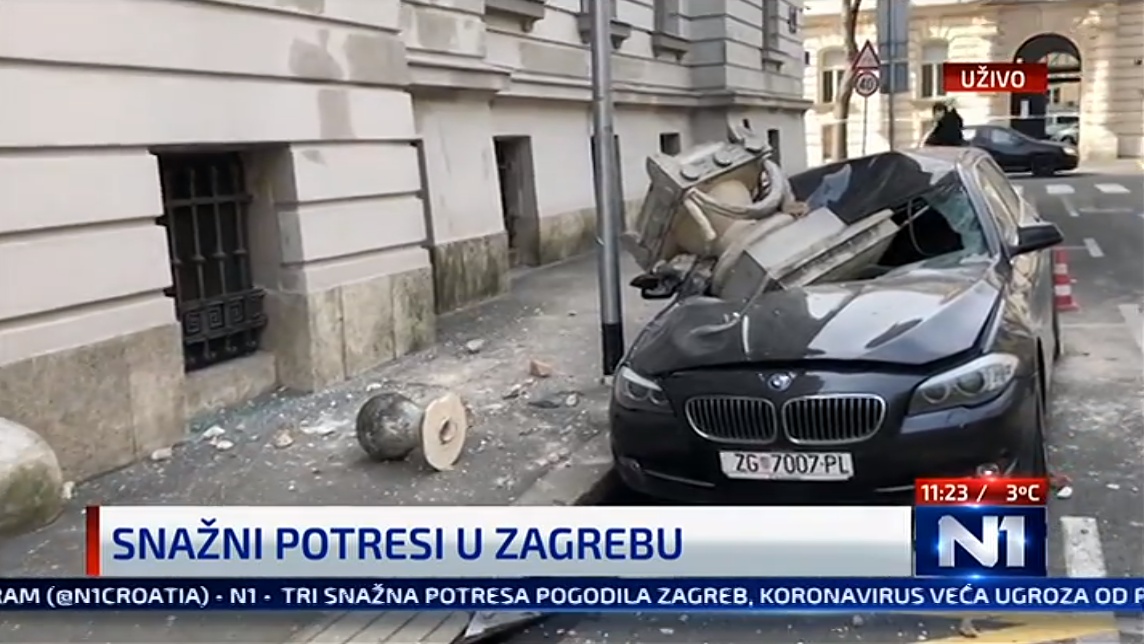


Images courtesy N1 Croatia
Obavijest o deset potresa registriranih danas mozete vidjeti na https://t.co/mYadvBm2pU
Vrijeme je u UTC-u (sat prije lokalnog). Imali smo jos tri potresa magnitude vece ili jednake 3 te pet potresa magnitude vece ili jednake 2 pic.twitter.com/pDajzvb27Q— Seizmološka služba HR (@seizmo_hr) March 22, 2020
Potresi magnituda vecih ili jednakih 1.3 jucer. Na prvoj slici prikazani u vremenu, visina je lokalna magnituda. Druga slika je histogram magnituda.
Stalno smo u kontaktu s kriznim stozerom. Informacije o ostalim jacim potresima slijede. pic.twitter.com/EKABxBsR3t— Seizmološka služba HR (@seizmo_hr) March 23, 2020
I can’t attribute this sorry! #Zagreb #earthquake pic.twitter.com/ixgyOit8Xn
— John Richards (@GoodnightWalter) March 22, 2020
MY GOD PRAY FOR US
Earthquake just hit was, it was huge 5.9.
CoronaVirus is here, our hospital are in huge problems, people are outside #Covid_19 #Croatia #Zagreb pic.twitter.com/937pAsycFS
— Lady Gaga Child (@GagaChild) March 22, 2020
Serious damages folllowing earthquakes in #Zagreb in last hours and minutes. Because of quarantine most people were at home, now gathering outside and leaving by car. Hospital treating #COVIDー19 very close too. Casualties still unknown
Here are pics and videos a friend sent me pic.twitter.com/hyd9S0dCYN— Loïc Tregoures (@LTregoures) March 22, 2020
#potres Bazilika Srca Isusova u Palmoticevoj u #Zagreb pic.twitter.com/84RmnuLtip
— Anamarija Bencic (@bencicAnamarija) March 22, 2020
Snažan potres jačine 5,3 stupnja zatresao je Zagreb nakon 6 sati ujutro. pic.twitter.com/ttNHr2g11x
— Ora et labora (@Sokolov_krik) March 22, 2020
Snažan potres zatresao je Zagreb u jutarnjim satima. Magnituda je 5,3! pic.twitter.com/fSRqADO186
— Mamin maneken (@maminmaneken) March 22, 2020
Strong #earthquake in #Zagreb, #Croatia. Additional to #COVIDー19 now the next disaster. #potres #Hrvatska pic.twitter.com/SguHpDts7f
— Miroslav Marence (@MarenceMiro) March 22, 2020
#potres #zagreb pic.twitter.com/2oYXOBYfGg
— Ivana Knezic (@iknezic_1311) March 22, 2020
#potres #petrova 🙁 pic.twitter.com/THitlwnZWy
— MariE (@MarijaZG) March 22, 2020
And now after the lockdown, the earthquake. Southern Europe is the center of hell right now. From my drive around this morning downtown after the quake #zagrebquake #croatiaquake #potres #Croatia pic.twitter.com/Bx3glVJxIo
— Adriatic (@bemoFL) March 22, 2020
Featured image credit: Google, TW/SAM

Commenting rules and guidelines
We value the thoughts and opinions of our readers and welcome healthy discussions on our website. In order to maintain a respectful and positive community, we ask that all commenters follow these rules.